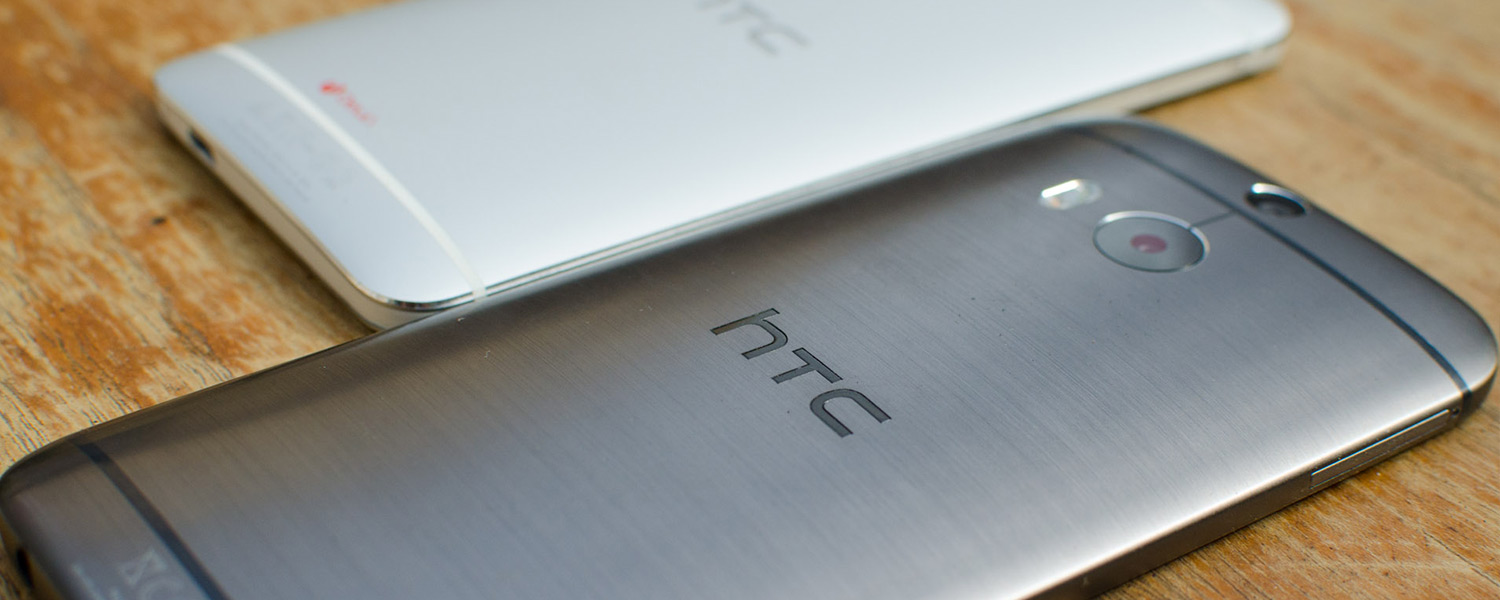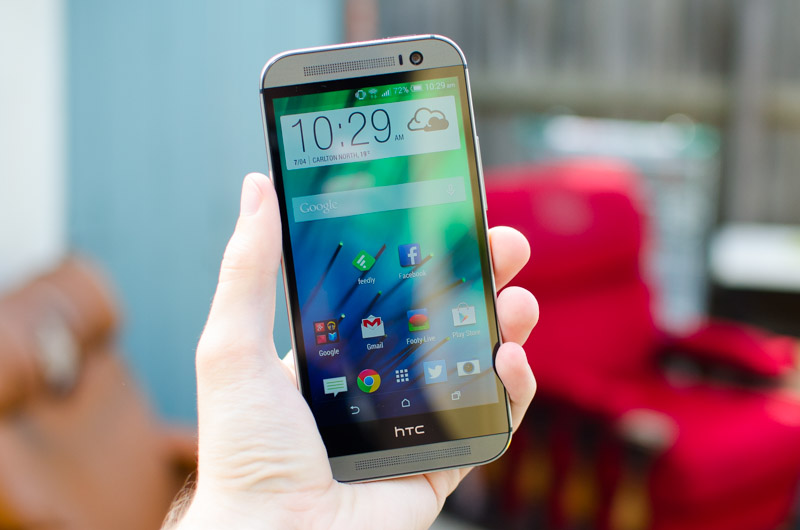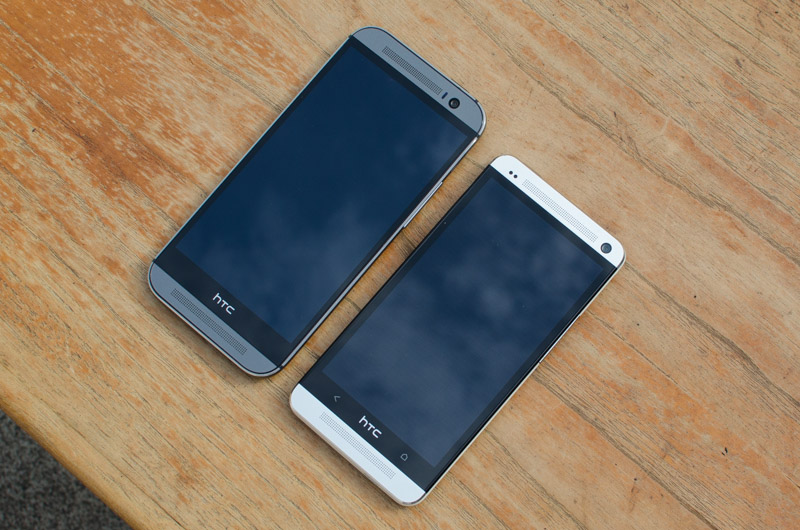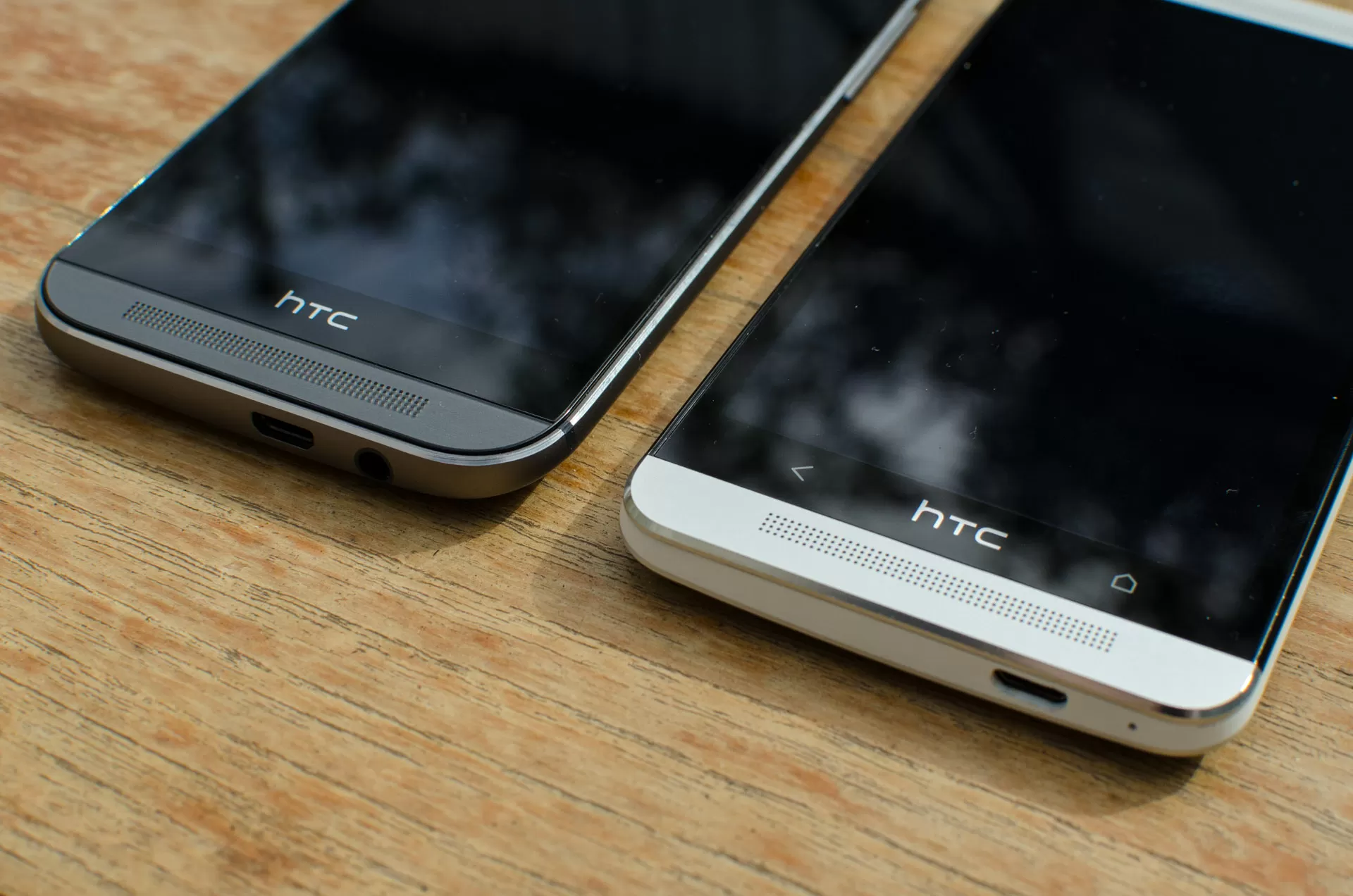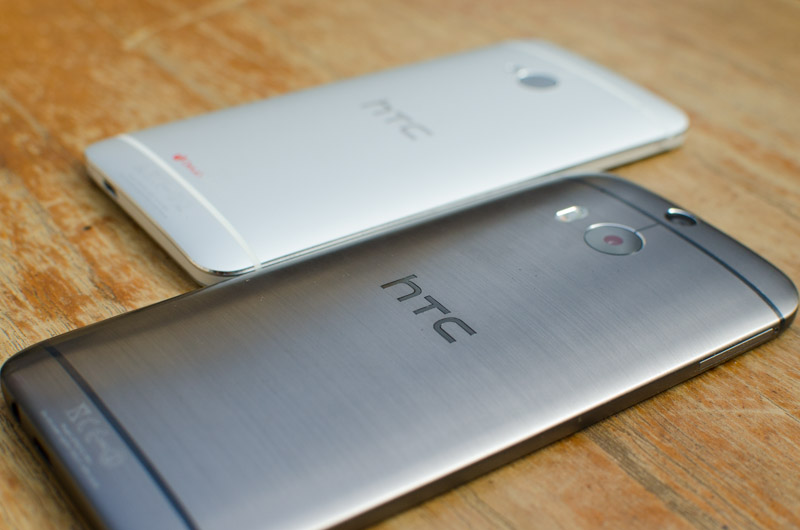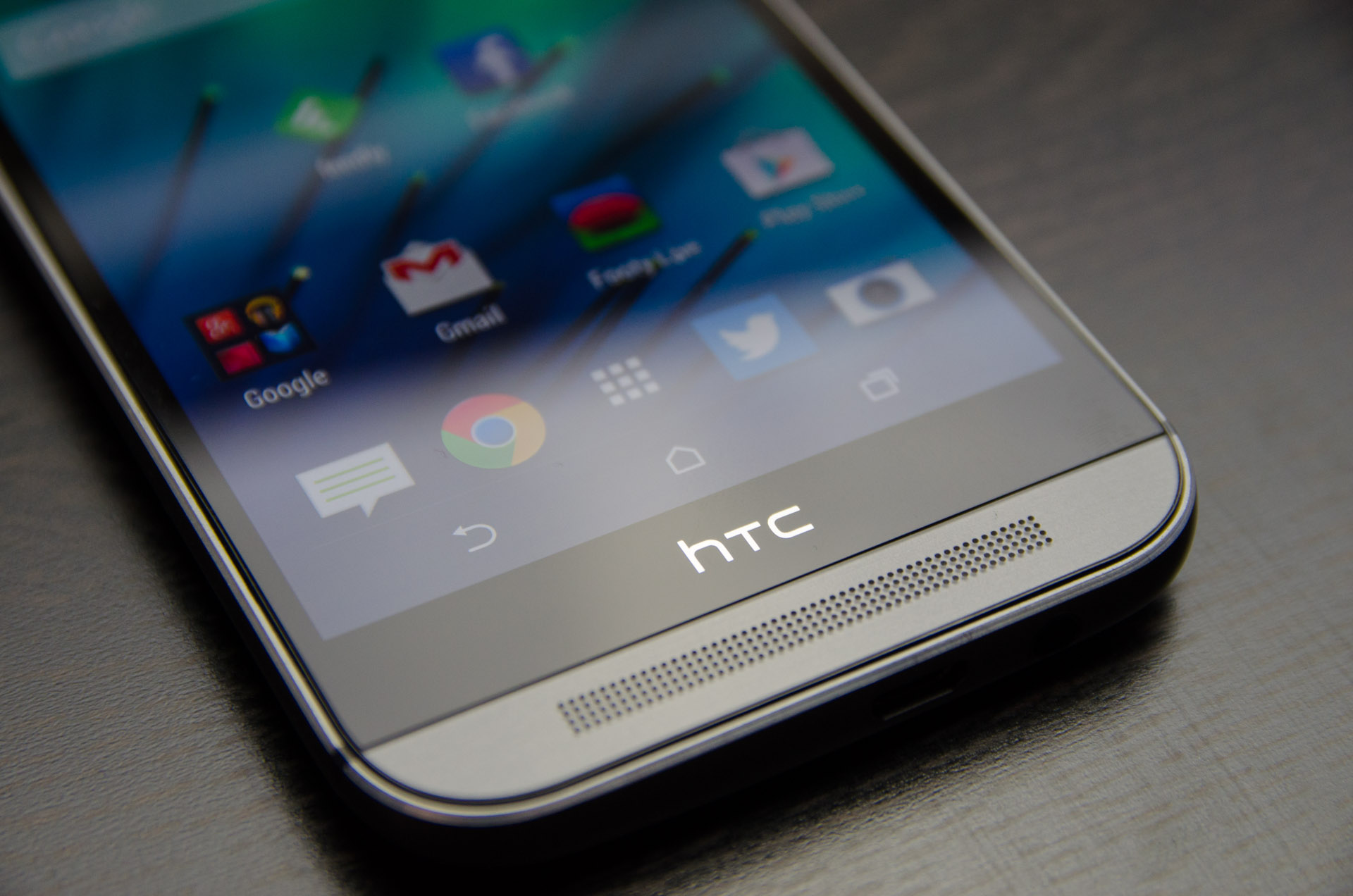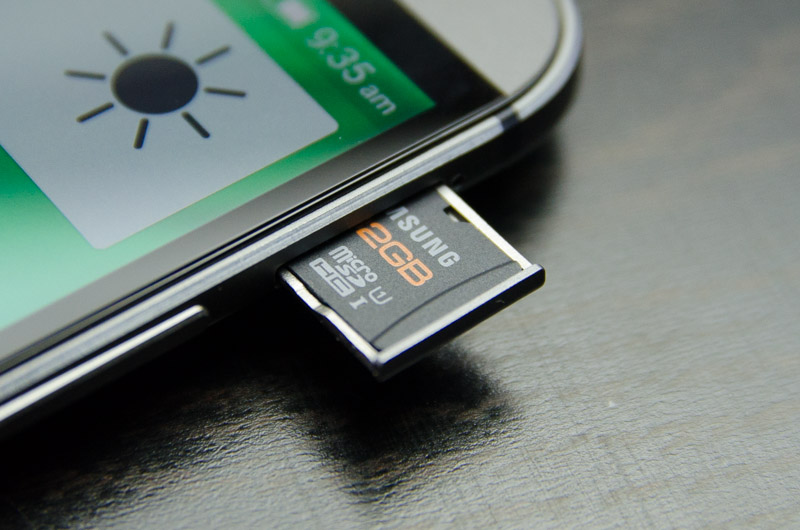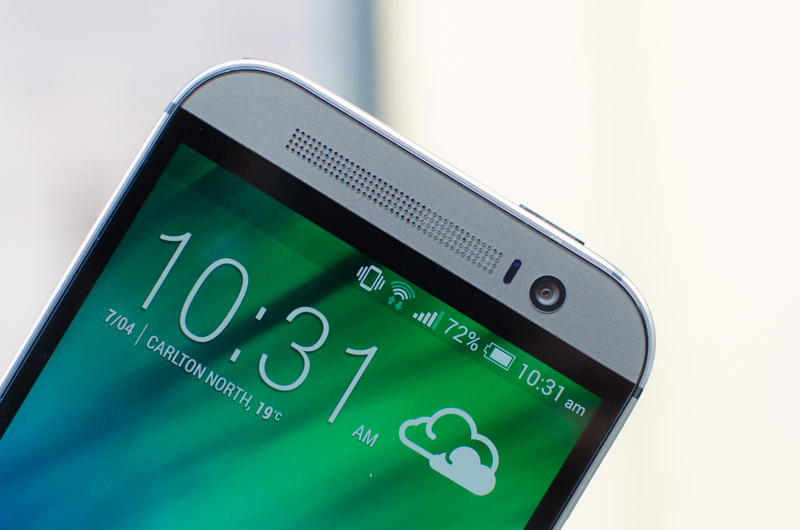The HTC One was one of my favorite pieces of hardware from 2013. It was the first time we had really seen a company succeed at producing an Android smartphone with a premium look and feel that rivaled Apple's iPhone. The zero-gap, curved aluminum construction looked simply astonishing, and remains one of my favorite phone designs thus far.
HTC One (M8) - $700 (unlocked)
- 5.0", 1920 x 1080 LCD display (441 ppi)
- Qualcomm Snapdragon 801 SoC
- 2.5 GHz quad-core CPU, Adreno 330 GPU, 2GB RAM
- 16/32 GB internal storage, microSD card slot
- 4 MP camera, 1/3" sensor, f/2.0 lens, 1080p video
- 1080p depth sensor
- 2,600 mAh, 9.88 Wh battery
- LTE, Wi-Fi a/b/g/n/ac, Bluetooth 4.0, NFC
- Android 4.4 'KitKat'
- 154 grams, 9.4mm thick
The design wasn't the only impressive aspect of the HTC One. BoomSound brought powerful front-facing speakers to the handset, plus the Zoe-powered, UltraPixel-laden camera had a strong feature set that largely made up for merely average image quality. BlinkFeed was another major feature touted by HTC, integrating news and social media sources into an interesting, yet largely overlooked homescreen panel.
In 2014, HTC is releasing the HTC One. Not the same HTC One from 2013, but the all new HTC One. Or the HTC M8. Or the 2014 HTC One. Or, officially, the HTC One (M8). It's a confusing naming choice from HTC, who want to show that this device expands on the concepts introduced last year, and is not a completely overhauled flagship. It's evolutionary, not revolutionary.
The evolution of the HTC One takes many forms. There's more aluminum than the original model; the display size has been bumped from 4.7-inches to 5-inches; the Ultrapixel camera has morphed into the all new Duo Camera array; there's a faster Snapdragon 801 chipset inside replacing the Snapdragon 600; there's a refined Sense 6.0 interface atop Android 4.4; and much more.
Nothing is ever a straight-up win in the smartphone universe though: HTC can pack all the fancy features it wants into the all new One, but poor execution can keep the phone from succeeding. How does the new HTC One (M8) stack up? Let's find out.
Design
No company has managed to match HTC in Android hardware design. The HTC One from 2013 was a magnificent specimen, featuring a zero-gap aluminum back plate, slick Gorilla Glass-covered display and polycarbonate inserts to give wireless radios room to breathe. Out of all the Android devices I held throughout the year, the HTC One felt the best by far.
The all new HTC One takes the aluminum concept seen on the original HTC One, and expands upon it. Wrapping around the edges of the device, the curved aluminum shell is now closer to a 'unibody' than ever before. You'll still see two strips of black polycarbonate material at the top and bottom of the gunmetal grey handset, again so that Wi-Fi and LTE can actually function, but the edges now feel just as slick as the rear.
Click on any photo to enlarge
Instead of a polished silver aluminium panel, HTC has switched to a brushed grey back as the default option for the HTC One. There's a certain shine and smoothness to this option that you didn't get with the 2013 HTC One (M7), and in some respects I prefer the more edgy design of the M7. But that's not to say the HTC One M8 has received a design downgrade: it's still miles ahead of its Android competitors, and it sits comfortably in the number two slot a smidgen behind its older brother.
If you would rather a silver HTC One M8, don't fret, because silver will be one of the three color options available for the device, essentially mimicking the 2013 HTC One's look. Alongside gunmetal grey, you'll be able to pick up the device in amber gold as well.
The area where HTC has really improved the One M8 over the One M7 is in how it feels: this is a phone that I just want to pick up and hold all the time. It truly feels incredible, not only from the premium-grade metal exterior that oozes quality, but also from the subtle changes to the curvature of the device that makes it fit perfectly in my hands.
Until now, I had never held a smartphone that's so ergonomic and so well sculpted, yet so beautiful from every angle. It's truly an achievement, and a testament to the HTC design team's vision; they are at the absolute top of their game, and it will be very hard for any company to match the quality demonstrated here.
What's even more compelling about the HTC One M8's design is that it feels slimmer than the One M7, despite coming in 1mm thicker. You can barely notice the extra 11 grams of weight added to the smartphone either.
The beautiful One M8 design isn't without a few oddities though. The physical buttons found around the edge feel very solid to operate, but I don't understand why HTC continues to put the power button on the top. The One M8 is a tall smartphone, and the power button is tricky to reach, especially when you're trying to turn off the display.
The height of the One M8 also seems taller than necessary. The device packs a larger 5-inch display with on-screen buttons, so the capacitive buttons around the HTC logo have been removed from the front. However, the large panel with the HTC logo still remains, adding to the handset's screen bezel and height without providing any obvious benefit.
The good news, though, is that these two minor oddities don't really matter. You can now power on the display simply by double-tapping on the Gorilla Glass panel that protects it, significantly reducing the inconvenience of reaching for the power button. As for the height, does the extra 9mm make a huge difference? Not at all, as the One M8 is far from cumbersome.
By going for an all-metal frame and Gorilla Glass 3 protecting the Super LCD 3 display, the new HTC One is tough. Throughout my period with the handset as my daily driver, the M8 resisted the urge to get scratched and remained in perfect condition. At an intimate launch event in Sydney I managed to sneak a peek at some of the HTC executives' personal One M8s, which they had been rocking since before MWC 2014, and they too looked in perfect nick.
Looking at the highlights around the device, and on the back you'll find classy, prominent HTC branding in the center, plus regulatory stamps towards the bottom. At the top is the brand new Duo Camera module, which is a combination of the Ultrapixel sensor from the One M7 (the larger lens) and a depth sensor (the smaller lens at the top). Initially, when leaked images of the device were being thrown around nearly every day, I thought the camera system looked odd, but it's less unusual when you see the smartphone in person and it's easy to get used to.
The left-hand edge of the One M8 is bare except for the well-hidden SIM card slot towards the top. The handset is one of the few to adopt nano SIM, so be prepared to grab a new SIM from your carrier if you're coming from one of the many micro SIM devices out there.
On the right is the metal volume rocker and another slot, this time for a microSD card. It seems HTC listened to consumer feedback surrounding the original HTC One and decided it wouldn't be too hard to incorporate a second slot into the unibody, allowing you to expand upon the device's 16 GB of internal memory with ease.
The bottom edge features the microUSB 2.0 charging and data port, as well as the 3.5mm audio jack, both offset to the right-hand side. The top is where you'll find the power button surrounded by black plastic, which is presumably to give the illusion that the infrared LED for controlling TVs is hidden beneath. In actual fact, the IR LED is in the home button, just like was the case on the HTC One M7.
On the front of the HTC One M8 you'll find the five-inch display set into a black glass panel, and flanked by the BoomSound speakers. Unlike on the M7, the two speaker grills on the M8 aren't of equal length, with the top grill being shorter to accommodate the large front-facing camera and sensor array. The difference in length is of little functional consequence - the speaker itself actually sits to the left of each grill, rather than in the center - unless you suffer from unfortunate OCD.
The BoomSound speakers are now 25% louder than in the original HTC One, and combined with an improved DSP, software and amplifier, sound even better. The One still suffers from a lack of bass from the speakers, but it produces by far the best sound I've heard from a smartphone; it delivers enough depth that I can actually listen to music without wanting to immediately die.
Hidden in the top right of the upper speaker grill is the ever-handy notification light, which continues to be one of my favorite features of Android smartphones. As far as I can tell this light only glows yellow-green and red.
